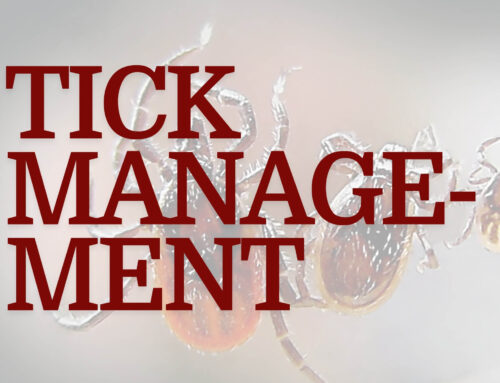Since March, ongoing rainfall in Central South Africa has triggered controlled water releases from the Bloemhof Dam and Vaal Dam. These releases have raised concerns among communities along the Vaal River, with some experiencing significant flood damage. However, flood management experts stress that these controlled measures are crucial for flood risk mitigation and protecting essential infrastructure.
Importance of Controlled Water Releases for Flood Risk Management
According to Roelie van Reenen, Supply Chain Executive at Beefmaster Group, Central South Africa’s extensive water infrastructure is designed to support long-term water security and to reduce the impact of extreme rainfall.
“The alternative to managing such situations through controlled releases can have devastating consequences. During flood periods, the volume of water flowing through the system can be two to three times the dam’s full capacity. Without proper management, the infrastructure cannot withstand these conditions, making controlled water release a necessity,” says van Reenen.
Managing Water Inflows: The Role of Bloemhof and Vaal Dams
To manage the significant rainwater inflows and protect communities downstream, authorities at the Bloemhof Dam recently released over 1.2 billion cubic metres of water across a period of five days. In the first release phase, around 777 million cubic metres were discharged at a peak rate of 3,000 cubic metres per second. On subsequent days, an additional 432 million cubic metres were released at a reduced rate of 2,500 cubic metres per second. While the water levels at both Bloemhof and Vaal dams remain high, reports indicate that the water levels are now subsiding, offering some relief.
“These are certainly challenging times for farmers and agricultural stakeholders in the area, but without proper infrastructure management, the impacts of flooding and drought would be even more severe,” van Reenen explains. “Our dam infrastructure is designed to buffer against these extremes, offering vital support for water security and flood control.”
Tips for Farmers to Prepare for Excess Water
Van Reenen stresses the importance of flood-proofing agricultural assets, such as irrigation systems, centre pivots, and buildings, by constructing them above designated flood lines to avoid damage during controlled releases.
“Authorities are managing the dam’s outflow as efficiently as possible, considering the large number of people downstream who may be affected,” he says.
The Wide Reach of Flood Risk
The decision to release water from dams takes into account multiple factors, including the potential impact on communities downstream of the Vaal and Orange Rivers, stretching as far as Douglas in the Northern Cape and Oranjemund in Namibia.
Van Reenen urges farmers and other stakeholders to maintain perspective and avoid unnecessary panic. “There is a lot of misinformation circulating, so it’s essential to rely on verified facts,” he adds. “The current rain and dam levels are not unprecedented. The Bloemhof Dam was previously released at a peak of 3,000 m³/s, and in earlier flood situations, releases have been even higher.”
Further data indicates that over the past century, the likelihood of a major flood event occurring within any given 20-year period is around 18%, increasing to 40% over a 50-year timeframe. Authorities also provide advance notifications before opening sluice gates, giving affected communities time to prepare or evacuate flood-prone areas.
Understanding the Function and Management of Bloemhof Dam
Van Reenen emphasises the importance of understanding the original purpose of key infrastructure like the Bloemhof Dam. Built primarily to support the Hartswater Irrigation Scheme – spanning more than 30,000 hectares – the dam works in conjunction with the Vaalharts Barrage, established in the 1930s, to maintain South Africa’s largest irrigation project. By the 1950s, the system had transformed a semi-arid region into one of the country’s most productive farming areas, delivering water through over 1,280 km of canals to crops such as maize, lucerne, cotton, and groundnuts.
In addition to its agricultural role, the dam has long been a vital tool in flood management, regulating water flows to protect communities downstream. While the dam cannot completely eliminate flooding, its design (including raised dam walls and controlled outflows) helps to mitigate the effects of extreme water surges, which can exceed 2.5 million litres per second.
A Call for More Dams and Water Security Investment
Van Reenen acknowledges the significant hardships faced by businesses and small communities along the river, which rely heavily on the river for their livelihoods. “When the river floods, business operations are disrupted, tourism is impacted, and communities suffer,” he says. “With the Easter holidays and public holidays coinciding with the current flooding, the effects are especially pronounced. People are avoiding these areas due to the floods, causing additional strain on the local economy.”
Key Takeaway: The Need for More Water Storage and Dams in South Africa
“As a nation, we must prioritise the construction of more dams,” van Reenen concludes. “Having more dams would allow us to better manage water discharge and flood peaks, which in turn supports economic stability, food security, and job creation. Investing in water storage infrastructure is crucial not just for the present but for future generations.”
For more insightful stories and updates like this, visit our news page regularly or subscribe to our newsletter. Don’t miss out on important updates!






